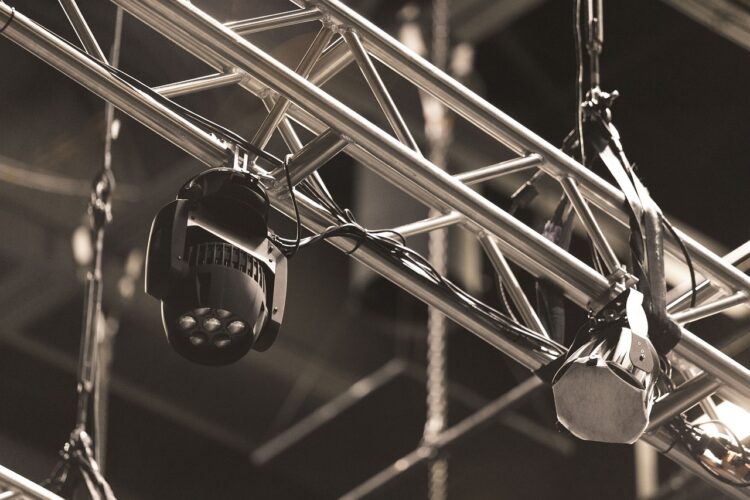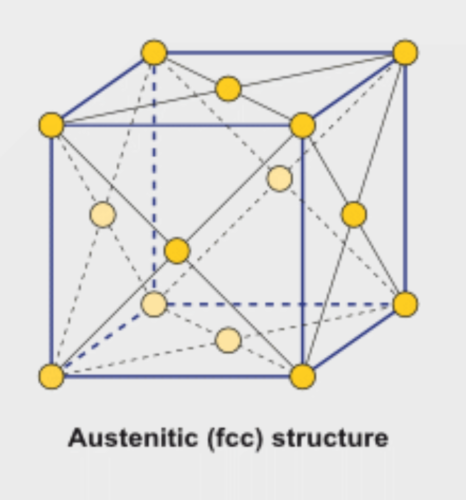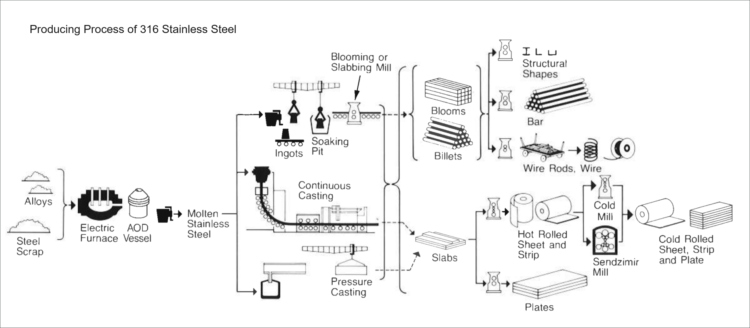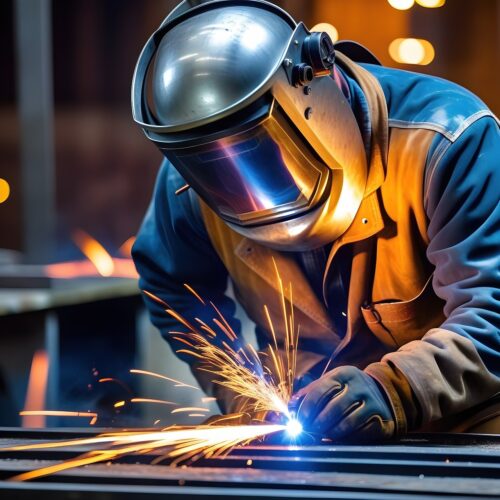Our Location
In various industries, stainless steel has become indispensable due to its exceptional mechanical, corrosion resistance, and machinability properties. Among these alloys, 316 stainless steel has gained significant attention and widespread use.
The article provides a comprehensive overview of 316 stainless steel, including its properties, applications, and machining intricacies. It also showcases this alloy’s diverse range of applications and evaluates its advantages and disadvantages in manufacturing.

Table of Contents
Toggle316 stainless steel is widely recognized for its exceptional ability to resist corrosion in different environments. This type of austenitic stainless steel is composed of 16-18% chromium, 10-14% nickel, 2-3% molybdenum, 0.08% carbon, and small amounts of other elements. The addition of molybdenum sets it apart from the most commonly used 304 stainless steel and gives SS 316 much better corrosion resistance than SS 304. Its crystalline structure with a face-centered cubic (FCC) arrangement of atoms contributes to its high strength and toughness.

The process of creating 316 stainless steel items involves melting together raw materials such as iron ore, chromium, nickel, and molybdenum in a large electric furnace for 8 to 12 hours. After the melting process is complete, the molten steel is cast into various semi-finished shapes, including slabs, blooms (rectangular shapes), billets (round or square), tube rounds and rods.
During the second stage, semi-finished steel shapes undergo a series of forming operations. For instance, aisi 316 is heated and passed through huge rolls in a process called hot rolling. Blooms and billets, as mentioned earlier, are transformed into bars and wires, while slabs are formed into plates, strips, or sheets. Bars are the most versatile form of stainless steel and are made in all grades and sizes. They come in round, square, octagonal, and hexagonal shapes, each suited for different applications.
The different forms of stainless steel undergo a meticulous process called annealing. Annealing involves heating and cooling stainless steel in a controlled environment to improve its properties. This heat treatment aims to eliminate any internal stress and make the material softer, making it more suitable for various applications. The personnel in charge of the annealing process must be vigilant about the conditions, as even the slightest changes in temperature, pressure, duration, or cooling rate could result in a defective product.
When 316 stainless steel undergoes annealing, a scale layer develops on its surface. A group of processes known as descaling removes this scale. One of the most widely used methods of descaling is pickling.
In this step, the semi-finished, heat-treated, and descaled 316 stainless steel forms are cut into specific shapes. Mechanical cutting can be achieved through the use of guillotine knives, blanking, nibbling, or high-speed blades.
316 stainless steel products undergo finishing to improve their aesthetic appeal and make them smoother and more accessible to clean for sanitary applications.

The chemical composition of 316 stainless steel comprises various elements: 16-18% chromium, 10-14% nickel, and 2-3% molybdenum. Table 1 below details the composition.
| Element | Percentage |
| Sulfur | <= 0.030% |
| Phosphorus | <=0.045% |
| Carbon | <= 0.08% |
| Nitrogen | <= 0.10% |
| Silicon | <= 1.00% |
| Manganese | <= 2.00% |
| Molybdenum | 2-3% |
| Nickel | 10-14% |
| Chromium | 16-18% |
| Iron | Balance (69%) |
| Property | Value |
| Density(g/cm3) | 8 |
| Electrical ResistivityΩ .m (at 20ºC) | 0.74 x 10-6 |
| Embodied Energy(MJ/kg) | 53 |
| Calomel Potential | -50 mV |
| Magnetism | Nonmagnetic |
| Note: SS 316 is mostly non-magnetic; however, it can become slightly magnetic after certain manufacturing processes. | |
| Property | Value |
| Rockwell Hardness | 95 |
| Brinell Hardness | 219 |
| Tensile Strength, Ultimate | 550 MPa (79800 psi ) |
| Tensile Strength, Yield | 240 MPa(34800 psi ) |
| Elongation at Break | 60% |
| Modulus of Elasticity | 193 GPa (28000 ksi ) |
| Izod Impact | 129 J (95.1 ft-lb ) |
| Charpy Impact | 105 J (77.4 ft-lb ) |
| Property | Value |
| CTE, linear, µm/m-°C(@Temperature 0.000 – 100 °C ) | 16 |
| CTE, linear,µm/m-°C(@Temperature 0.000 – 315 °C) | 16.2 |
| CTE, linear,µm/m-°C(@Temperature 0.000 – 540 °C ) | 17.5 |
| Specific Heat Capacity(J/g-°C) | 0.5 |
| Thermal Conductivity(W/m-K) | 16.3 |
| Thermal Expansion(/K) | 15.9 x 10-6 |
| Melting Point( °C) | 1370 – 1400 |
This material is highly effective in various atmospheric conditions and can withstand many corrosive substances. It is generally stronger than the material known as 304 stainless steel. But, in warm chloride environments, there is a risk of pitting and crevice corrosion affecting it. In addition, stress corrosion cracking can occur above 60 °C. Nonetheless, it is considered resistant to potable water that contains up to 1000 mg/L of chlorides at room temperature. As the temperature rises to 60°C, the chloride concentration should be lowered to around 500 mg/L.
Many people consider SS 316 as the default “marine grade stainless steel”. However, it doesn’t hold up well to warm seawater. In most marine environments, the surface of 316 stainless steel corrodes, which typically appears as a brown stain. This is more likely to occur in cracks and on rough surfaces.
It is important to note that intermittent use of 316 stainless steel up to 870°C and continuous use up to 925°C has good oxidation resistance. However, if water corrosion resistance is a priority, it is not recommended to use SS 316 continuously at temperatures between 425-860°C. Instead, Grade 316L is a better option as it is less likely to form carbides and can be used in the aforementioned temperatures. For structural and pressure-containing applications that require more robust materials, Grade 316H can be used at temperatures above 500°C.
Heat treatment is a process that can alter or improve the properties of SS 316 steel, increasing its strength and hardness. The most common heat treatments for 316 stainless steel are annealing (heating it to 1010-1120°C and then cooling it rapidly) and tempering (quick cooling). Besides, heat treatments like stress relief and solution annealing can enhance durability.
All typical hot working processes can be performed on 316 stainless steel. However, hot working should not be performed below 927°C. The recommended temperature range for optimal hot working is 1149-1260°C. Post-work annealing is advised to ensure maximum corrosion resistance.
316 stainless steel can be easily rolled or broken into different shapes. Additionally, it is ideal for stamping, heading, and drawing. However, annealing the steel after these processes is recommended to release any internal stresses. Cold working can enhance the strength and hardness of 316 stainless steel.
When fabricating all stainless steels, it is important to use tools exclusively meant for stainless steel materials. The tooling and work surfaces should be cleaned thoroughly before use. This is necessary to prevent cross-contamination of stainless steel by easily corroded metals that may cause discoloration of the surface of the fabricated product.
316 stainless steel is a material that is easy to machine. In order to improve the machining process, the following guidelines can be followed:
The fusion welding performance of 316 stainless steel is excellent, whether using fillers or not. It is recommended that the same filler rods and electrodes for 316 and 316L be used for the base metal. However, heavy welded sections may require annealing after the welding process. In such cases, 316Ti may be used as an alternative to 316 stainless steel. Note that oxyacetylene welding is unsuitable for joining 316 stainless steel.

The following are equivalent forms of 316 stainless steel:
| Country | Equivalent Grade |
| EU | EN/DIN 1.4401, X5CrNiMo17-12-2 |
| CN | GB 0Cr17Ni12Mo2 |
| Russia | GOST 08X17H13M2T |
| Japan | JIS SUS 316, JIS SUS 316L |
| France | AFNOR Z6CND17.11 |
| UK | BS 316S31, BS 316S33 |
| Germany | DIN X5CrNiMo17-12-2 |
| USA | ASTM/UNS S31600 |
| Italy | UNI X5CrNiMo17-12 |
| Sweden | SS 2347 |
| Czechia | CSN 17346 |
| Austria | NORM X5CrNiMo17-12-2KW |
316 stainless steel is available in various forms, including:
Sheet metal is a type of metal that ranges in width from 0.5 to 6mm, and the width determines the thickness. Among the versatile options of sheet metal, 316 stainless steel sheet, also known as cold-rolled products, are especially useful. These sheets can be easily molded into various shapes, making them ideal for cookware applications such as grills, pots, and sinks. Additionally, they are commonly used as finishes for appliances like countertops, refrigerators, freezers, and dishwashers. Stainless steel sheet metal also finds utility in manufacturing light bulb bases and automobile license plates.
316 stainless steel bars are rods available in various sizes and shapes, including cylindrical and rectangular, depending on the application’s particular requirements. This type of stainless steel bar stock has the same properties and composition as sheets but is more rigid, making it able to support higher loads than sheet metal. Bar stock is commonly used in construction, architectural applications, shafts, fasteners, and marine hardware.
316 stainless plates are flat plates that are typically thicker than 6 mm. They offer the same properties as a sheet, but their additional thickness makes them suitable for heavy-duty applications. Common uses include structural components, pressure vessels, and chemical processing equipment.
For applications in high-pressure and harsh environments, 316 stainless steel tubes offer increased strength and corrosion resistance, meeting the requirements of your projects.
In addition, other forms of 316 stainless steel are available such as strips, tubes, fittings, and flanges.
A variety of finishing techniques are available to customize the appearance of 316 stainless steel to specific design requirements. These techniques include mechanical finishes such as grinding and polishing, chemical processes like passivation and electropolishing, and coatings such as powder coating and PVD.
Finishes on stainless steel serve multiple purposes, including enhancing aesthetics, improving corrosion resistance, and simplifying maintenance. Two common finishes are passivation and electropolishing, and we will discuss each of them in detail:
Passivation is a chemical process that helps enhance the corrosion resistance of stainless steel. It does this by creating a passive oxide layer on the surface of the steel, which acts as a barrier against corrosion. As a result, stainless steel becomes more resistant to rusting, staining, and pitting. The passivation process involves a few steps, including:
Passivation is a common process for protecting stainless steel against harsh environments. Industries such as pharmaceutical, food processing, and aerospace use this process extensively.
Electropolishing is a non-contact electrochemical process that removes a thin layer of material from stainless steel surfaces. This process is utilized for polishing and deburring, and it provides numerous benefits over traditional methods:
Electropolishing is a process used in various industries, such as pharmaceuticals, food processing, medical devices, and semiconductor manufacturing, to achieve a high-quality and corrosion-resistant surface finish.
In conclusion, passivation and electropolishing are crucial for enhancing the corrosion resistance, appearance, and overall performance of 316 stainless steel in various industries. Although they have distinct roles, they are often used together to achieve the desired results and improve the material’s properties.
316 ss is highly resistant to corrosion and can be easily shaped, welded, and machined using standard fusion methods. Because of its exceptional qualities, it is extensively utilized in various sectors:
Additional reasons why 316ss is used in the sectors above include:
CNC machining of 316 stainless steel has several advantages, such as its ability to resist corrosion, withstand high temperatures, and provide strength. However, some challenges must be considered, such as machinability, tool wear, heat generation, and post-machining. Mechanical engineers must balance material properties, machining techniques, and design requirements to produce high-quality machined components from 316 stainless steel.
The prime difference between 304 and 316 stainless steel is that 316 has 2-3% molybdenum, while 304 has none. Additionally, SS 316 has a higher nickel content and slightly less chromium than SS 304. These variations make SS 316 more resistant to corrosion in environments that contain chloride. On the other hand, SS 304 is less expensive than SS 316 and is commonly used in approximately 60% of austenitic stainless steel applications.
316 and 316L stainless steel are suitable for marine environments but differ significantly. 316L is a type of stainless steel with a lower carbon content than 316. To be classified as aisi 316L, the carbon content cannot exceed 0.03%. This helps reducing the risk of carbon precipitation, making it a better choice for welding and ensuring maximum resistance to corrosion.
On the other hand, ss316 contains a mid-range level of carbon and between 2% and 3% molybdenum. The presence of molybdenum makes it more resistant to corrosion, acidic elements, and high temperatures.
Compared to other steel types available today, 316 stainless steel offers excellent mechanical properties and superior resistance to corrosion. Its diverse range of applications spans medical equipment to construction projects, where its durability and longevity are crucial requirements from a structural standpoint. Thanks to its good formability and weldability characteristics, combined with its excellent strength, toughness, and hardness capabilities, 316 stainless steel is an ideal choice for many different industries that demand reliable materials capable of withstanding extreme temperatures, pressures, loads, vibrations, impacts, and more.
Enze is a 316 stainless steel manufacturer, also, we are one of the famous 316l stainless steel suppliers in China. If you have any question, please feel free to contact us.

